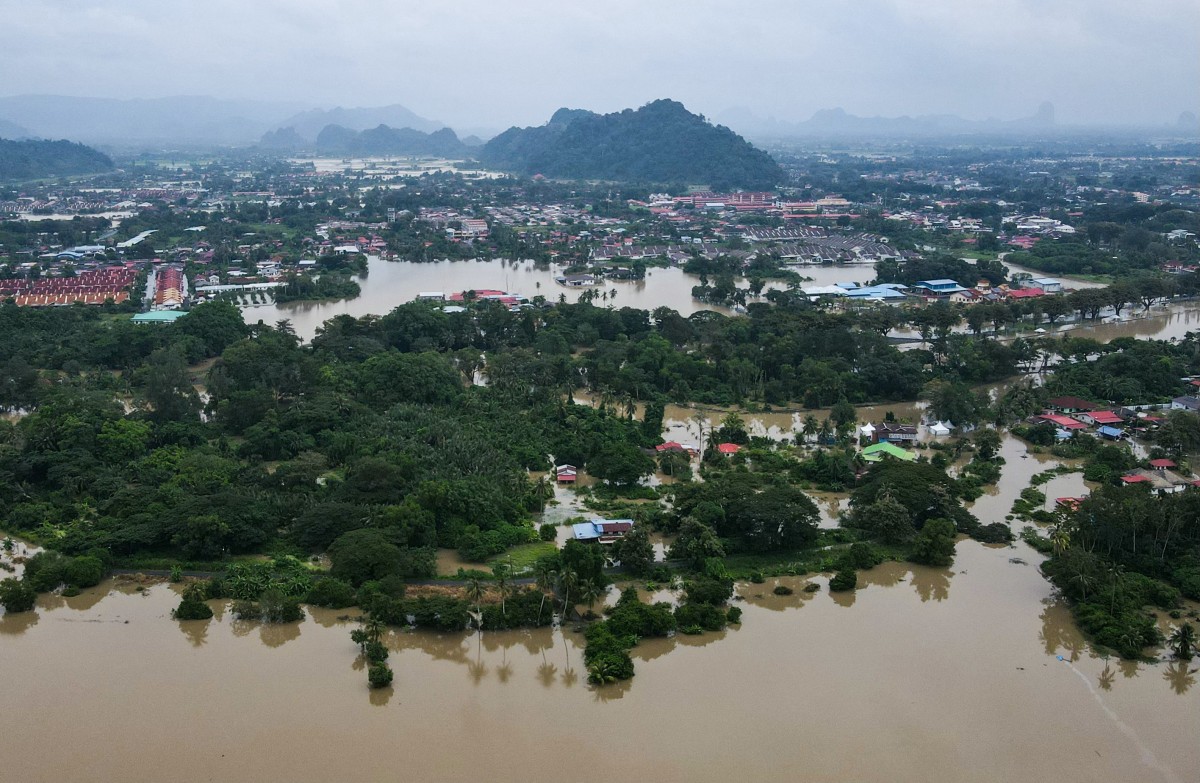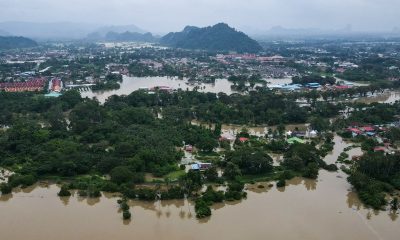International
Conflicts and disasters caused the displacement of 83 million people in 2024, a record figure

A total of 83.4 million people, a figure never recorded before, lived at the end of 2024 away from their homes in their own countries due to conflicts and natural disasters, according to the annual report of the Internal Displacement Observatory (IDMC).
The figure represents an increase of 11% compared to the previous year and indicates that in six years the domestic displacement figures have doubled, in a context of growing violence on all continents and greater frequency of extreme weather events as a result of climate change.
90% of these displacements (73.5 million, 10% more than in 2023) were caused by violence, with Sudan being the country most affected by this type of exodus, since two years of civil war have forced 11.6 million people to live far from their homes, the highest figure ever recorded in a single country.
Next are Syria, with 7.4 million internally displaced people, although this figure is expected to fall this year after the fall of the Bashar al-Assad regime in December, while Colombia, with 7.3 million, could instead increase these figures in 2025 with the growing conflict in the northeastern region of Catatumbo.
At the end of last year, 9.8 million people were displaced by natural disasters, an increase of 29% compared to a year earlier, of which one in seven (1.3 million) is in Afghanistan, a country that last year was hit by both droughts and floods.
The second country with the most disaster displaced people is Chad (1.2 million), followed by the Philippines (one million), Ethiopia (757,000) and Somalia (733,000).
Of all the displaced, almost half are concentrated in sub-Saharan Africa (38.8 million), 20% in the Middle East and the Maghreb (16.6 million), 12% in the Americas (9.7 million) and 9% in South Asia (7.1 million).
In Europe, mainly because of the war in Ukraine, there are still 5.9 million internally displaced persons, 7% of the total, while in East Asia and the Pacific the number of people away from their homes is 5.2 million, 6%.
“These figures show that internal displacement is not only a humanitarian crisis: it is a clear political and development challenge that requires much more attention than it currently receives,” said IDMC director Alexandra Bilak, when presenting these figures.
Last year IDMC accounted for 20.1 million movements of displaced people due to conflict, including 5.3 million in the DRC, 3.7 million in Sudan and 3.2 million in Palestine, where due to the constant Israeli attacks many civilians have had to move several times throughout the conflict.
In addition, disaster movements totaled last year another record figure, 45.8 million, almost all due to floods and storms, hurricanes, cyclones or typhoons, although on many occasions they were temporary evacuations, after which the displaced were able to return home.
The fact that the United States ranked first in this indicator stands out, taking into account the massive evacuations carried out during Hurricanes Helene and Milton in Florida: in total, the displacements due to disasters in that country were 11 million.
Next, the Philippines (almost 9 million), India (5.4 million), China (3.9 million) and Bangladesh (2.4 million) were placed in the table.
IDMC warned that the number of countries in which displacements were recorded due to both conflicts and disasters has tripled since 2009, and that more than three quarters of internally displaced people at the end of 2024 lived in countries very vulnerable to climate change.
“Solving displacement requires both immediate efforts to help people who have lost everything and investments to address vulnerabilities, with the aim that people are not forced to move,” Bilak stressed.
To the internally displaced persons should be added the also growing number of people who have fled from conflicts, crises and disasters to other countries as refugees or asylum seekers, and which according to figures from the UN Refugee Agency (UNHCR) amounted to 43.4 million in mid-2024.
International
Chile enters runoff campaign with Kast leading and Jara seeking a last-minute comeback

Chile’s presidential runoff campaign for the December 14 election kicked off this Sunday, with far-right candidate José Antonio Kast entering the race as the clear favorite in the polls, while left-wing contender Jeannette Jara faces an uphill scenario, hoping for a comeback that some experts describe as “a miracle.”
The final polls released in Chile—published before the mandatory blackout on survey dissemination—give Kast, an ultraconservative former lawmaker running for president for the third time, a lead of between 12 and 16 points. His opponent, the communist former minister in Gabriel Boric’s current administration, is weighed down not only by the government’s low approval ratings but also by a fragmented electorate.
Although Jeannette Jara received the most votes in the first round with 26.9%, her lack of alliances beyond the left makes it difficult for her to expand her support. Kast, who secured 23.9%, has already brought key figures on board: ultralibertarian Johannes Kaiser (13.9%) and traditional right-wing leader Evelyn Matthei (12.4%), both now backing his candidacy.
Analysts note that although Kast’s support base consolidates more than 50% of the electorate, it does not guarantee an automatic transfer of votes. Populist economist Franco Parisi, who placed third with 19.7%, emerges as the major wildcard. His party, the People’s Party (PDG), is set to decide this Sunday through an internal consultation whether to endorse one of the two finalists.
International
Trump says asylum decision freeze will remain in place “for a long time”

U.S. President Donald Trump warned on Sunday that the suspension of decisions on asylum applications—implemented as part of his order to “halt” immigration from third-world countries following Wednesday’s shooting in Washington—will remain in effect “for a long time.”
The president declined to specify how long the freeze, imposed last Friday by the U.S. Citizenship and Immigration Services (USCIS), would last. The suspension affects individuals waiting for an asylum ruling from that agency, though it does not apply to cases handled by U.S. immigration courts.
The delay is part of a series of measures enacted by the Trump Administration after a shooting on Wednesday in which an Afghan national allegedly opened fire on the National Guard in Washington, D.C., killing one officer and leaving another in critical condition.
Trump has ordered a permanent halt to immigration from 19 countries classified as “third-world.” He also indicated on Sunday that “possibly” more nations could be added to the list.
“These are countries with high crime rates. They are countries that do not function well… that are not known for success, and frankly, we don’t need people from those places coming into our country and telling us what to do,” Trump said, adding: “We don’t want those people.”
USCIS had already announced on Thursday a “rigorous review” of green cards held by migrants from 19 “countries of concern,” including Afghanistan, Cuba, Venezuela, and Haiti.
International
Sri Lanka and Indonesia deploy military as deadly asian floods kill over 1,000

Sri Lanka and Indonesia deployed military personnel on Monday to assist victims of the devastating floods that have killed more than a thousand people across Asia in recent days.
A series of weather events last week triggered prolonged torrential rains across Sri Lanka, parts of Indonesia’s Sumatra island, southern Thailand, and northern Malaysia. Indonesian President Prabowo Subianto said Monday in North Sumatra that “the priority now is to deliver the necessary aid as quickly as possible.”
“There are several isolated villages that, with God’s help, we will be able to reach,” he added. Subianto also stated that the government had deployed helicopters and aircraft to support relief operations.
Floods and landslides have claimed 502 lives in Indonesia, with a similar number still missing.
This marks the highest death toll from a natural disaster in Indonesia since 2018, when an earthquake and subsequent tsunami killed more than 2,000 people.
The government has sent three military ships carrying aid and two hospital vessels to the hardest-hit regions, where many roads remain impassable.
In the village of Sungai Nyalo, located about 100 kilometers from Padang, the capital of West Sumatra, floodwaters had receded by Sunday, leaving homes, vehicles, and crops coated in thick mud.
-

 Central America3 days ago
Central America3 days agoTrump Pardons Former Honduran President Hernández and Warns of Aid Cuts Ahead of Election
-

 International22 hours ago
International22 hours agoHong Kong police arrest 13 over deadly high-rise fire that killed 151
-

 Central America1 day ago
Central America1 day agoHonduras Extends Voting by One Hour Amid High Turnout, CNE Announces
-

 Central America2 days ago
Central America2 days agoHonduras’ China–Taiwan Future Hinges on Sunday’s Presidential Election
-

 International3 days ago
International3 days agoMeta Says Russia Seeks to Ban WhatsApp for Defending Secure Communication
-

 International22 hours ago
International22 hours agoSri Lanka and Indonesia deploy military as deadly asian floods kill over 1,000
-

 International22 hours ago
International22 hours agoTrump says asylum decision freeze will remain in place “for a long time”
-

 International22 hours ago
International22 hours agoChile enters runoff campaign with Kast leading and Jara seeking a last-minute comeback






























